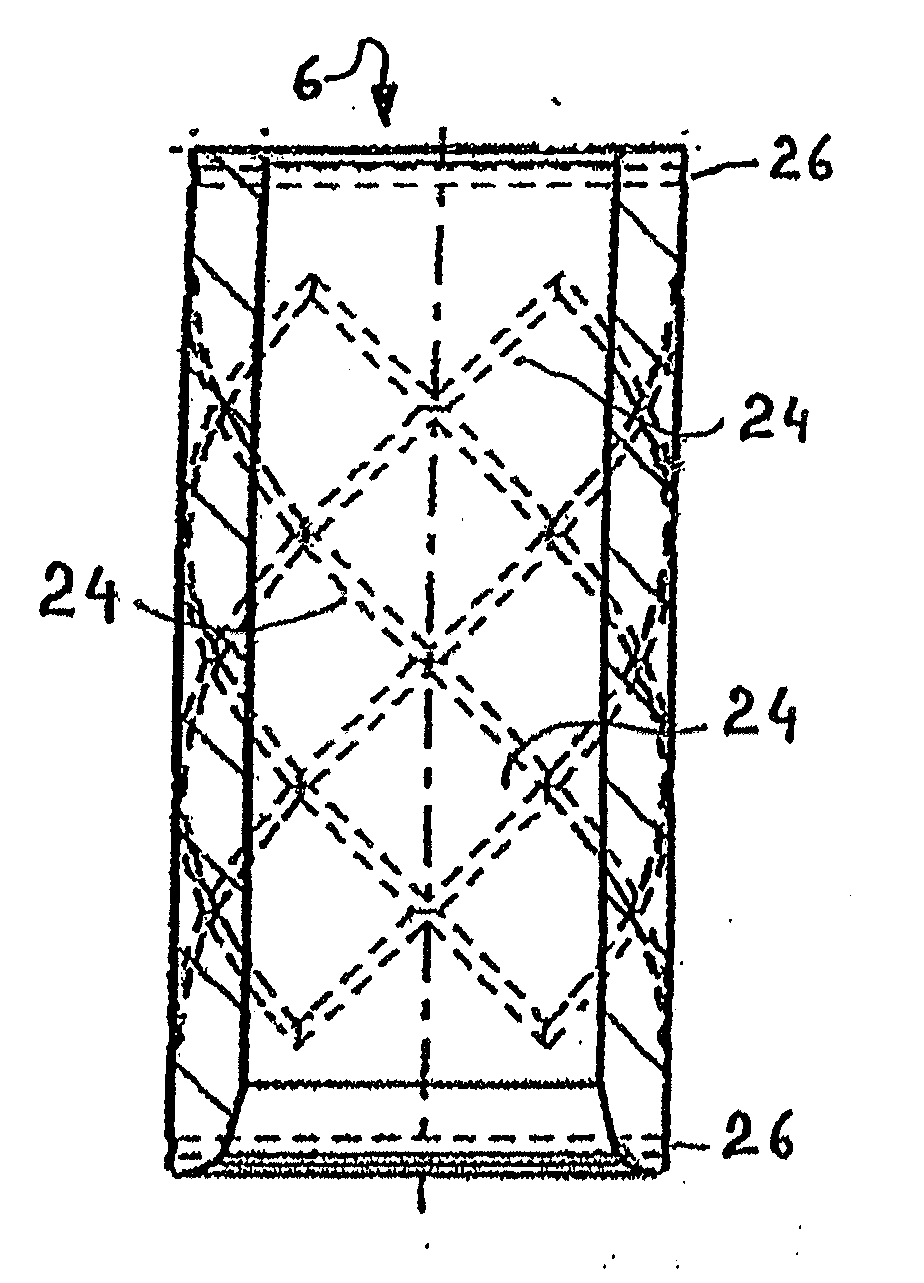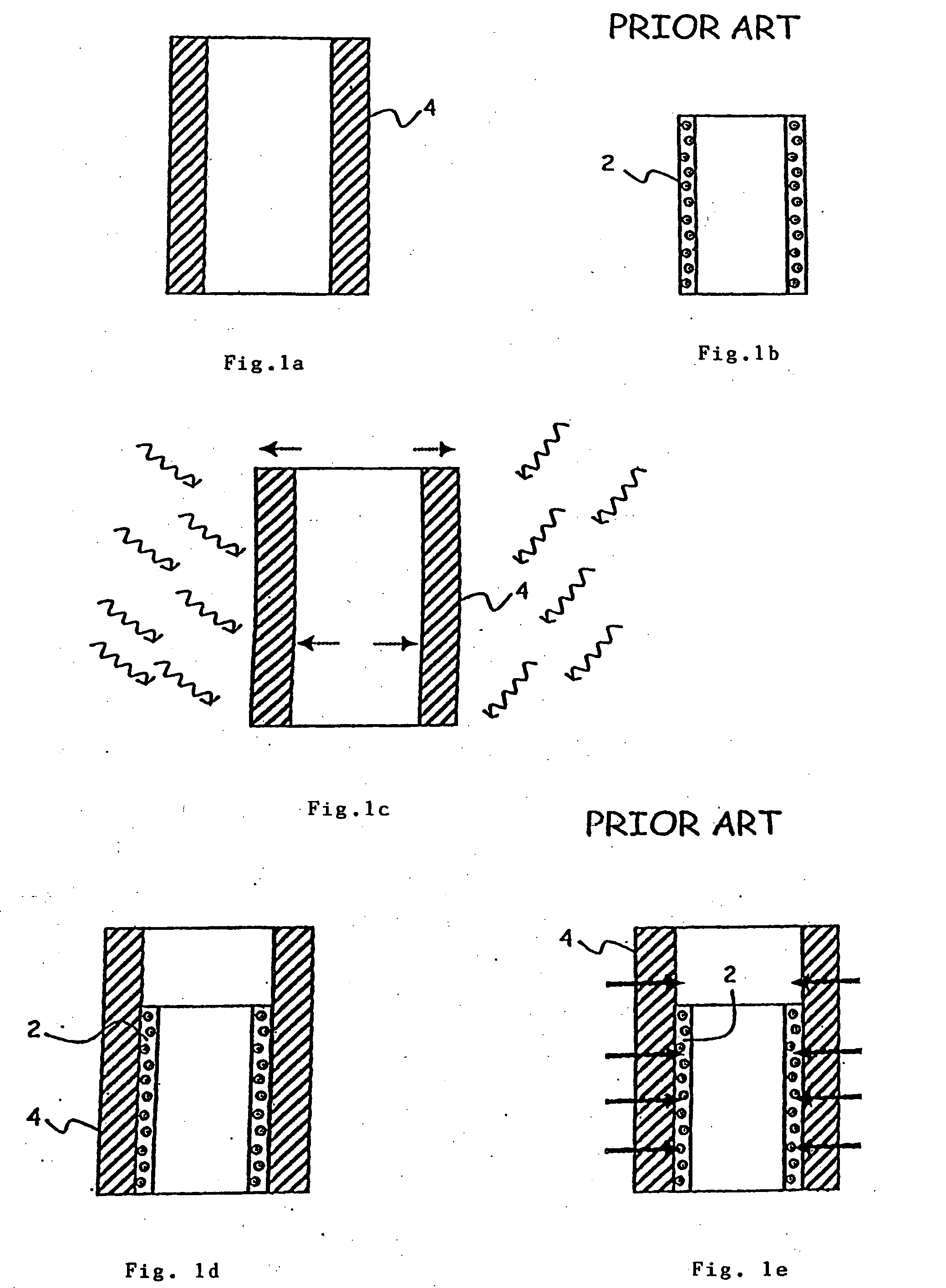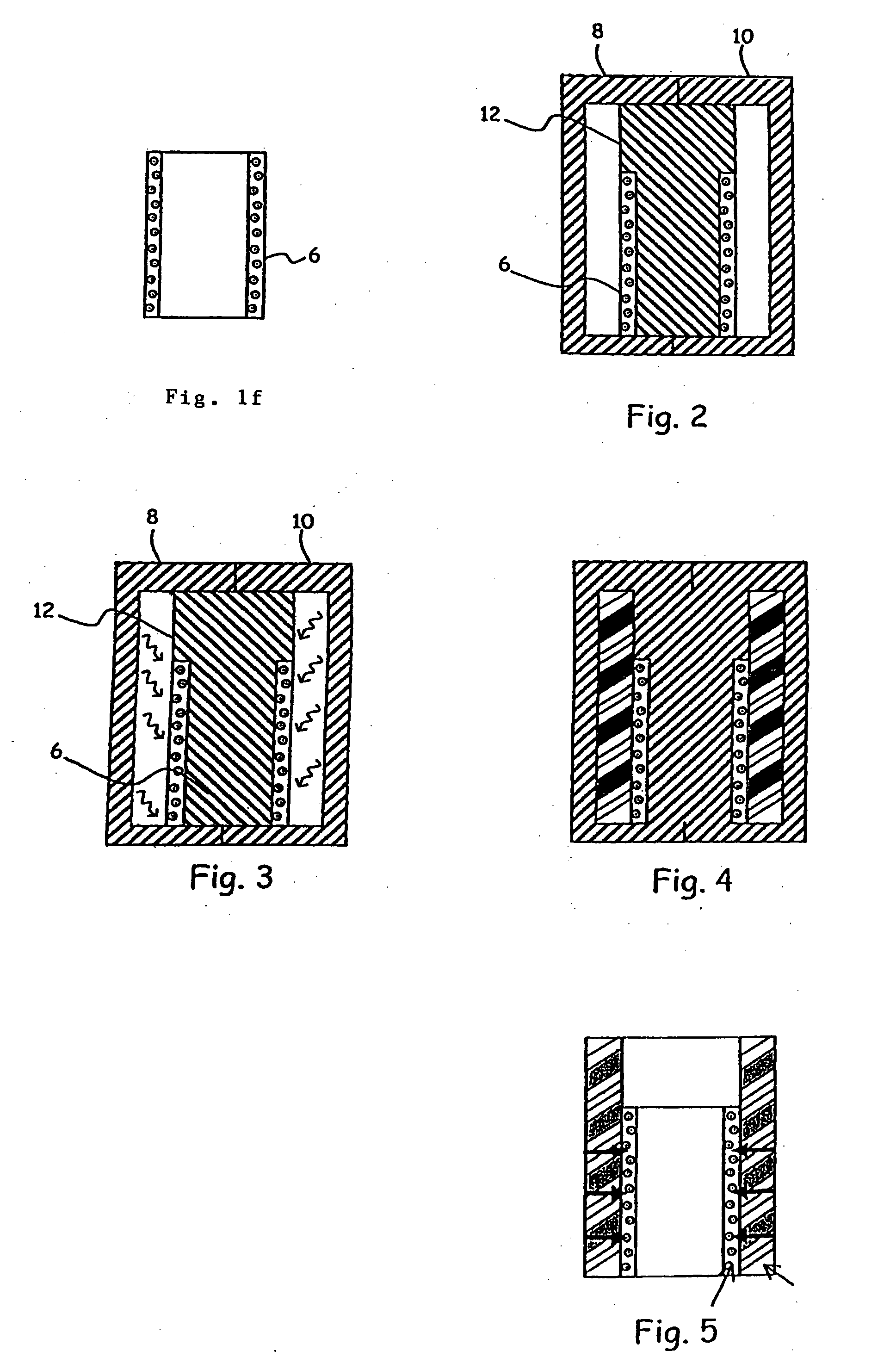Ceramic-overmoulding method and composite element obtained by this method
a technology of ceramic overmoulding and composite elements, which is applied in the direction of application, coating, rigid pipes, etc., can solve the problems of difficult to obtain intimate contact between the two associated materials, brittle material, and difficult machine, etc., to achieve reliable, flexible, easy to maintain in suit and hygienic
- Summary
- Abstract
- Description
- Claims
- Application Information
AI Technical Summary
Benefits of technology
Problems solved by technology
Method used
Image
Examples
Embodiment Construction
[0055]FIGS. 1a to 1e give the various steps of the hooping method developed previously (prior art) for assembling ceramic and metallic elements to produce composite pieces that can satisfy the constraints imposed by the packaging industries.
[0056]FIG. 1b shows an element in sleeve form made of ceramic 2, defined as a “female” element. The qualities of the ceramic makes such an element ideal for forming the internal sleeve of a pump chamber for the packaging of fluids, pasty or powdery products. However, as such, this sleeve is virtually unusable, since it is excessively difficult to join it to other pieces of a circuit without risk of damaging it. One solution is to set it in a cylinder make of stainless steel 4, as represented in FIG. 1d. This cylinder 4 can be provided, by different known methods (welding, brazing, moulding), with various added accessories (not shown, in the interests of clarity). This cylinder 4 is machined internally so that its internal diameter roughly corresp...
PUM
| Property | Measurement | Unit |
|---|---|---|
| depth | aaaaa | aaaaa |
| depth | aaaaa | aaaaa |
| temperature | aaaaa | aaaaa |
Abstract
Description
Claims
Application Information
 Login to View More
Login to View More - R&D
- Intellectual Property
- Life Sciences
- Materials
- Tech Scout
- Unparalleled Data Quality
- Higher Quality Content
- 60% Fewer Hallucinations
Browse by: Latest US Patents, China's latest patents, Technical Efficacy Thesaurus, Application Domain, Technology Topic, Popular Technical Reports.
© 2025 PatSnap. All rights reserved.Legal|Privacy policy|Modern Slavery Act Transparency Statement|Sitemap|About US| Contact US: help@patsnap.com



